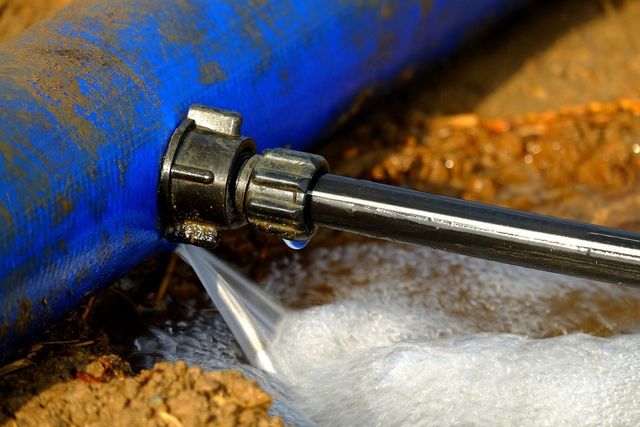6 Ways to Locate Concealed Water Leaks in Your Home
6 Ways to Locate Concealed Water Leaks in Your Home
Blog Article
Have you been looking for critical info about Detecting hidden plumbing leaks?

Early detection of dripping water lines can alleviate a possible calamity. Apart from conserving you cash, it will certainly reduce the aggravation and frustration. The minute you discover a leak, calling your plumber for repairs is the most effective option. Some tiny water leakages might not be visible. If you can not detect it with your nude eyes, here are some hacks that assist.
1. Analyze the Water Meter
Every residence has a water meter. Checking it is a guaranteed manner in which aids you discover leaks. For starters, shut off all the water resources. Ensure no one will flush, utilize the faucet, shower, run the washing maker or dishwashing machine. From there, most likely to the meter and watch if it will transform. Because no one is using it, there need to be no motions. If it relocates, that indicates a fast-moving leak. If you identify no changes, wait an hour or two as well as inspect back once again. This means you might have a slow-moving leakage that could also be below ground.
2. Inspect Water Intake
If you identify unexpected modifications, in spite of your consumption being the same, it suggests that you have leakages in your plumbing system. An unexpected spike in your bill indicates a fast-moving leakage.
A stable rise every month, even with the very same practices, shows you have a sluggish leakage that's also gradually escalating. Call a plumber to extensively examine your property, specifically if you really feel a cozy area on your floor with piping below.
3. Do a Food Coloring Examination
When it comes to water intake, 30% comes from toilets. If the color in some way infiltrates your bowl during that time without flushing, there's a leak in between the storage tank and dish.
4. Asses Outside Lines
Do not neglect to inspect your exterior water lines also. Examination faucets by attaching a garden tube. Should water seep out of the connection, you have a loosened rubber gasket. Change this and make sure all links are tight. It will certainly help obtain it skillfully took a look at as well as preserved yearly if you've obtained a lawn sprinkler system. One tiny leakage can throw away lots of water and increase your water expense.
5. Examine the scenario and also check
Home owners should make it a routine to examine under the sink counters as well as even inside cupboards for any bad odor or mold and mildew growth. These two red flags suggest a leakage so punctual attention is needed. Doing routine assessments, even bi-annually, can save you from a major issue.
Much more notably, if you recognize your residence is currently old, maintain a watchful eye on your heaters, hose pipes, pipes and so on. Check for stainings and also compromising as a lot of home appliances and also pipes have a life expectancy. They will additionally normally deteriorate because of tear as well as use. If you suspect leaking water lines in your plumbing system, do not await it to rise. Call a specialist plumber right now so you do not wind up with a dreadful mess in your home.
Early detection of dripping water lines can alleviate a prospective disaster. Some little water leaks might not be noticeable. Inspecting it is a surefire means that assists you uncover leaks. One little leak can throw away lots of water and also surge your water costs.
If you suspect dripping water lines in your plumbing system, don't wait for it to rise.
WARNING SIGNS OF WATER LEAKAGE BEHIND THE WALL
PERSISTENT MUSTY ODORS
As water slowly drips from a leaky pipe inside the wall, flooring and sheetrock stay damp and develop an odor similar to wet cardboard. It generates a musty smell that can help you find hidden leaks.
MOLD IN UNUSUAL AREAS
Mold usually grows in wet areas like kitchens, baths and laundry rooms. If you spot the stuff on walls or baseboards in other rooms of the house, it’s a good indicator of undetected water leaks.
STAINS THAT GROW
When mold thrives around a leaky pipe, it sometimes takes hold on the inside surface of the affected wall. A growing stain on otherwise clean sheetrock is often your sign of a hidden plumbing problem.
PEELING OR BUBBLING WALLPAPER / PAINT
This clue is easy to miss in rooms that don’t get much use. When you see wallpaper separating along seams or paint bubbling or flaking off the wall, blame sheetrock that stays wet because of an undetected leak.
BUCKLED CEILINGS AND STAINED FLOORS
If ceilings or floors in bathrooms, kitchens or laundry areas develop structural problems, don’t rule out constant damp inside the walls. Wet sheetrock can affect adjacent framing, flooring and ceilings.
https://www.servicemasterbyzaba.com/blog/how-to-detect-water-leakage-in-walls/

I was made aware of that article about Hacks to detect leaks through someone on our other site. Appreciated our piece of writing? Please share it. Let someone else check it out. I love reading our article about Hacks to detect leaks.
Report this page